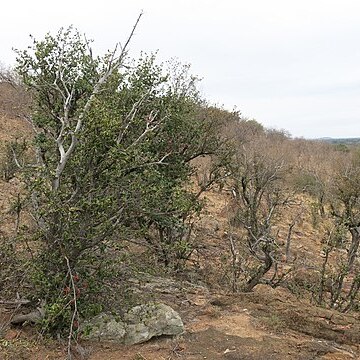Female flowers: pedicels 1–1.5 cm long, extending to up to 3 cm long in fruit; sepals 7–8 × 2–2.5 mm, ovate-lanceolate, obtusely acuminate or sometimes bifid at the apex, minutely crisped-puberulous on the margins and at the base, otherwise ± glabrous; ovary c. 3 mm in diameter, ovoid, densely tomentose; stylar column with styles c. 7 mm long, puberulous, stigmas minutely papillose.
Leaf blades 3–9(13) × 2–7(12) cm, broadly ovate or asymmetrically hemirhombic-ovate, less often elliptic-ovate, obtuse or rounded at the apex, cuneate to rounded or truncate at the base, or peltate, entire, coriaceous, glabrous, shiny and dark green on upper surface, densely whitish-tomentose beneath, 5–7-nerved from the base; lateral nerves in 5–8 pairs.
Fruit 8–10 × 12–13 mm, minutely crisped puberulous, bright green at first, yellowish to light brown when mature; indumentum detersible (easily detached).Seeds 6.5–7(8)× 4.5–5(6) × 2–3 mm, laterally compressed-ovoid, shallowly longitudinally striate-ridged, chestnut-brown.
Tree, up to 15 m high. Branchlets silky-hairy, angular and articulated. Leaves opposite, decussate, long-petiolate, coriaceous, silky beneath. Flowers yellow.
Stipular sheath 1–3.5 × 0.4–0.7 cm, oblong, rounded, detersibly tomentellous (indumentum easily detached).
Male inflorescences up to 3 cm long, 3-flowered, with the central flower longer than the laterals.
Bark blackish-grey, longitudinally fissured.
Young growth densely whitish-tomentose.
Petioles 0.5–4 cm long.
A tree up to 20 m high.
Twigs grey.
Wood hard.


